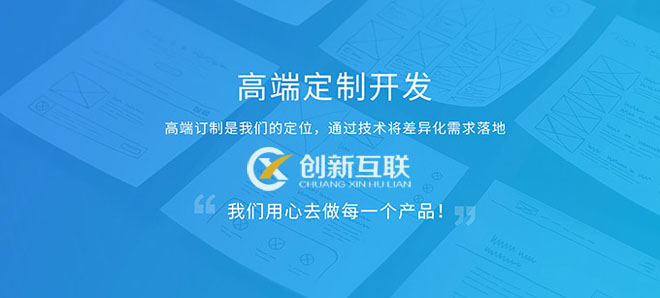asp.netmvc中如何實現(xiàn)Forms身份驗證身份驗證流程-創(chuàng)新互聯(lián)
這篇文章主要介紹了asp.net mvc中如何實現(xiàn)Forms身份驗證身份驗證流程,具有一定借鑒價值,需要的朋友可以參考下。希望大家閱讀完這篇文章后大有收獲。下面讓小編帶著大家一起了解一下。

驗證流程
一、用戶登錄
1、驗證表單:ModelState.IsValid
2、驗證用戶名和密碼:通過查詢數(shù)據(jù)庫驗證
3、如果用戶名和密碼正確,則在客戶端保存Cookie以保存用戶登錄狀態(tài):SetAuthCookie
1):從數(shù)據(jù)庫中查出用戶名和一些必要的信息,并把額外信息保存到UserData中
2):把用戶名和UserData保存到 FormsAuthenticationTicket 票據(jù)中
3):對票據(jù)進行加密 Encrypt
4):將加密后的票據(jù)保存到Cookie發(fā)送到客戶端
4、跳轉(zhuǎn)到登錄前的頁面
5、如果登錄失敗,返回當(dāng)前視圖
二、驗證登錄
1、在Global中注冊PostAuthenticateRequest事件函數(shù),用于解析客戶端發(fā)過來的Cookie數(shù)據(jù)
1):通過 HttpContext.Current.User.Identity 判斷用戶是否登錄(FormsIdentity,IsAuthenticated,AuthenticationType)
2):從HttpContext 的Request的Cookie中解析出Value,解密得到 FormsAuthenticationTicket 得到UserData
2、角色驗證
1):在Action加入 Authorize特性,可以進行角色驗證
2):在 HttpContext.Current.User 的 IsInRole 方法進行角色認證(需要重寫)
一、用戶登錄
1、設(shè)置web.config
設(shè)置重定向登錄頁面
<system.web> <authentication mode="Forms"> <forms name="loginName" loginUrl="/UserInfo/login" cookieless="UseCookies" path="/" protection="All" timeout="30"></forms> </authentication> </system.web>
注釋掉
<modules> <!--<remove name="FormsAuthentication" />--> </modules>
2、登陸的驗證中控制器
控制器中加“[Authorize]”修飾的方法拒絕匿名。
public class UserInfoController : Controller //控制器
{
//身份驗證過濾器
[Authorize]
public ActionResult Index()
{
return View();
}
}控制器中登錄
/// <summary>
/// 用戶登錄
/// </summary>
/// <returns></returns>
public ActionResult login()
{
return View();
}
[HttpPost]
public ActionResult login(loginModels login) {
if (ModelState.IsValid)
{
var model = db.Admininfo.FirstOrDefault(a => a.AdminAccount == login.AdminAccount && a.AdminPwd == login.AdminPwd);
if (model != null)
{
//存入票據(jù)(用戶登錄的時候去存信息,如果有信息直接去登錄)
var dtoModel = new Users
{
id = model.id,
AdminPwd = model.AdminPwd,
AdminAccount=model.AdminAccount
};
//調(diào)用
SetAuthCookie(dtoModel);
//獲取登錄地址
var returnUrl = Request["ReturnUrl"];
//判斷登錄地址是不是空值
if (!string.IsNullOrWhiteSpace(returnUrl))
{
return Redirect(returnUrl);
}
else
{
//return RedirectiToAction
return Redirect("/Home/index");
}
}
else
{
ModelState.AddModelError("", "賬號密碼不對");
return View(login);
}
}
else
{
ModelState.AddModelError("", "輸入的信息有誤");
return View(login);
}對登錄賬號進行cookie
/// <summary>
/// 對登錄賬號進行cookie
/// </summary>
/// <param name="model"></param>
public void SetAuthCookie(Users loginModel) {
//1、將對象轉(zhuǎn)換成json
var userdata = loginModel.ToJson();
//2、創(chuàng)建票據(jù)FormsAuthenticationTicket
FormsAuthenticationTicket ticket = new FormsAuthenticationTicket(2,"loginUser",DateTime.Now,DateTime.Now.AddDays(1), false, userdata);
//對票據(jù)進行加密
var tickeEncrypt = FormsAuthentication.Encrypt(ticket);
//創(chuàng)建Cookie,定義
HttpCookie cookie = new HttpCookie(FormsAuthentication.FormsCookieName, tickeEncrypt);
cookie.HttpOnly = true;
cookie.Secure = FormsAuthentication.RequireSSL;
cookie.Domain = FormsAuthentication.CookieDomain;
cookie.Path = FormsAuthentication.FormsCookiePath;
cookie.Expires = DateTime.Now.Add(FormsAuthentication.Timeout);
//先移除cookie,在添加cookie
Response.Cookies.Remove(FormsAuthentication.FormsCookieName);
Response.Cookies.Add(cookie);
}3、Models中添加模型文件
public class loginModels
{
/// <summary>
/// 賬號
/// </summary>
[DisplayName("賬號")]
[Required(ErrorMessage = "賬號不能為空")]
public string AdminAccount { get; set; }
/// <summary>
/// 密碼
/// </summary>
[DisplayName("密碼")]
[Required(ErrorMessage = "密碼不能為空")]
public string AdminPwd { get; set; }
}4、Views中 Login 代碼:
復(fù)制代碼 代碼如下:
@using (Html.BeginForm("Login", "Account", new { ReturnUrl = ViewBag.ReturnUrl }, FormMethod.Post, new {
@class = "form-horizontal", role = "form" }))5、Global設(shè)置
protected void Application_AuthenticateRequest(object sender, EventArgs e)
{
//1、通過sender獲取http請求
// HttpApplication app = new HttpApplication();//實例化
HttpApplication app = sender as HttpApplication;
//2、拿到http上下文
HttpContext context = app.Context;
//3、根據(jù)FormsAuthe,來獲取cookie
var cookie = context.Request.Cookies[FormsAuthentication.FormsCookieName];
if (cookie != null)
{
//獲取cookie的值
var ticket = FormsAuthentication.Decrypt(cookie.Value);
if (!string.IsNullOrWhiteSpace(ticket.UserData))
{
//把一個字符串類別變成實體模型
var model = ticket.UserData.ToObject<AdmininfoViewModel>();
//var acount = model.AdminAccount; //獲取賬號
context.User = new MyFormsPrincipal<AdmininfoViewModel>(ticket, model);
//MyFormsPrincipal.Identity = new FormsIdentity(ticket);
// MyFormsPrincipal.userdata;
}
}
}6、退出登錄
控制器中
/// <summary>
/// 退出登錄
/// </summary>
public ActionResult loginout()
{
//刪除票據(jù)
FormsAuthentication.SignOut();
//清除cookie
Response.Cookies[FormsAuthentication.FormsCookieName].Expires = DateTime.Now.AddDays(-1);
Response.Cookies.Remove(FormsAuthentication.FormsCookieName);
return RedirectToAction("Index", "Home");
}View跳轉(zhuǎn)鏈接
@Html.ActionLink("安全退出","loginout","Users")感謝你能夠認真閱讀完這篇文章,希望小編分享asp.net mvc中如何實現(xiàn)Forms身份驗證身份驗證流程內(nèi)容對大家有幫助,同時也希望大家多多支持創(chuàng)新互聯(lián),關(guān)注創(chuàng)新互聯(lián)行業(yè)資訊頻道,遇到問題就找創(chuàng)新互聯(lián),詳細的解決方法等著你來學(xué)習(xí)!
網(wǎng)站題目:asp.netmvc中如何實現(xiàn)Forms身份驗證身份驗證流程-創(chuàng)新互聯(lián)
文章分享:http://chinadenli.net/article4/dghiie.html
成都網(wǎng)站建設(shè)公司_創(chuàng)新互聯(lián),為您提供軟件開發(fā)、企業(yè)網(wǎng)站制作、靜態(tài)網(wǎng)站、網(wǎng)站建設(shè)、網(wǎng)站營銷、ChatGPT
聲明:本網(wǎng)站發(fā)布的內(nèi)容(圖片、視頻和文字)以用戶投稿、用戶轉(zhuǎn)載內(nèi)容為主,如果涉及侵權(quán)請盡快告知,我們將會在第一時間刪除。文章觀點不代表本網(wǎng)站立場,如需處理請聯(lián)系客服。電話:028-86922220;郵箱:631063699@qq.com。內(nèi)容未經(jīng)允許不得轉(zhuǎn)載,或轉(zhuǎn)載時需注明來源: 創(chuàng)新互聯(lián)
猜你還喜歡下面的內(nèi)容
- 解決線上135因mongodb太大容量,導(dǎo)致硬盤空間不足的方-創(chuàng)新互聯(lián)
- HashMap源碼閱讀與解析-創(chuàng)新互聯(lián)
- Python實現(xiàn)直方圖均衡基本原理解析-創(chuàng)新互聯(lián)
- Tomcat服務(wù)器在45秒內(nèi)未啟動成功怎么辦-創(chuàng)新互聯(lián)
- python3安裝庫后不能用的解決方法-創(chuàng)新互聯(lián)
- pythonjson.dumps中文亂碼怎么辦-創(chuàng)新互聯(lián)
- python迭代器和生成器有什么區(qū)別-創(chuàng)新互聯(lián)

- 火爆的ChatGPT,來聊聊它的熱門話題 2023-02-20
- 怎樣利用chatGPT快速賺錢? 2023-05-05
- ChatGPT是什么 2023-02-20
- ChatGPT是什么?ChatGPT是聊天機器人嗎? 2023-05-05
- ChatGPT的應(yīng)用ChatGPT對社會的利弊影響 2023-02-20
- ChatGPT的發(fā)展歷程 2023-02-20
- 爆紅的ChatGPT,誰會丟掉飯碗? 2023-02-20
- 馬云回國,首談ChatGPT。又是新一個風(fēng)口? 2023-05-28